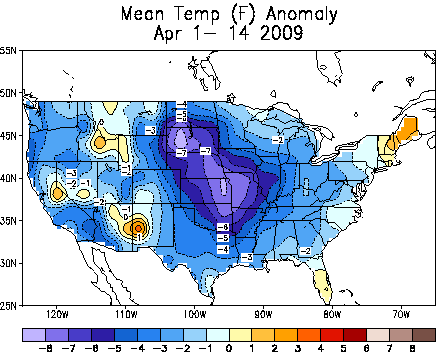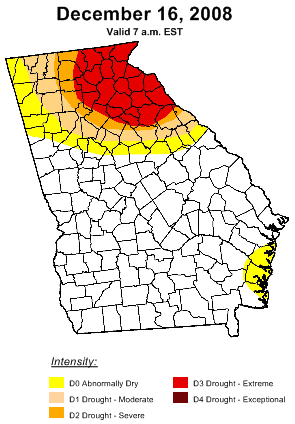September 2009 North Georgia Weather Recap
Sunday, October 4th, 2009
Now that September is over, we can look back at a month that will be remembered for plenty of rain. Of course, it all depended on where you were: Gwinnett, Cobb and Douglas counties received far more precipitation than did the official measuring station at Hartsfield Airport. Still, it was the fifth wettest September on record in Atlanta, with 8.94 inches, or 219% of normal. It was the third wettest September in Macon with 10.68 inches, or 328% of normal, and the fourth wettest in Athens, with 9.86 inches, or 279% of normal rainfall.
At my house in Lawrenceville, I recorded 16.28 inches of rain, or 427% of normal rain. Gainesville reported 12.10 inches of rain, or 275% of normal, and Peachtree DeKalb airport had 15.74 inches of precipitation, or 420% of normal. The image above graphically displays the month’s rainfall. Click on it to enlarge.
Cooler than normal temperatures early in the month were balanced out with warmer than normal temperatures later on, ending up with a more or less normal average temperature for September. Atlanta’s mean temperature was 73.4 degrees, two tenths of a degree above normal. In Gainesville, the average of 71.0 degrees was 0.7 degrees cooler than normal, and in Athens, temperatures were half a degree above normal, with 73.1.
By now, even the most cynical will have to admit that the drought that plagued Georgia from 2006-2008 is finally over. A recent study by Columbia University indicated the drought wasn’t caused by global warming, and in fact wasn’t that unusual. The study says that the drought appeared more serious this time because of the Atlanta region’s growing population. While there was enough water for the region during similar droughts in the 1950s, not enough additional water storage was available to meet needs this time.
Sphere: Related Content


 Last week’s rainfall greatly reduced the intensity of the drought in Georgia, according to the latest update to the drought monitor, shown at right. Before last week’s rain, exceptional drought was the rule north and east of Gwinnett County, some 11% of the state. This week, no part of Georgia is in exceptional drought, and almost 70% of the state is drought free.
Last week’s rainfall greatly reduced the intensity of the drought in Georgia, according to the latest update to the drought monitor, shown at right. Before last week’s rain, exceptional drought was the rule north and east of Gwinnett County, some 11% of the state. This week, no part of Georgia is in exceptional drought, and almost 70% of the state is drought free.